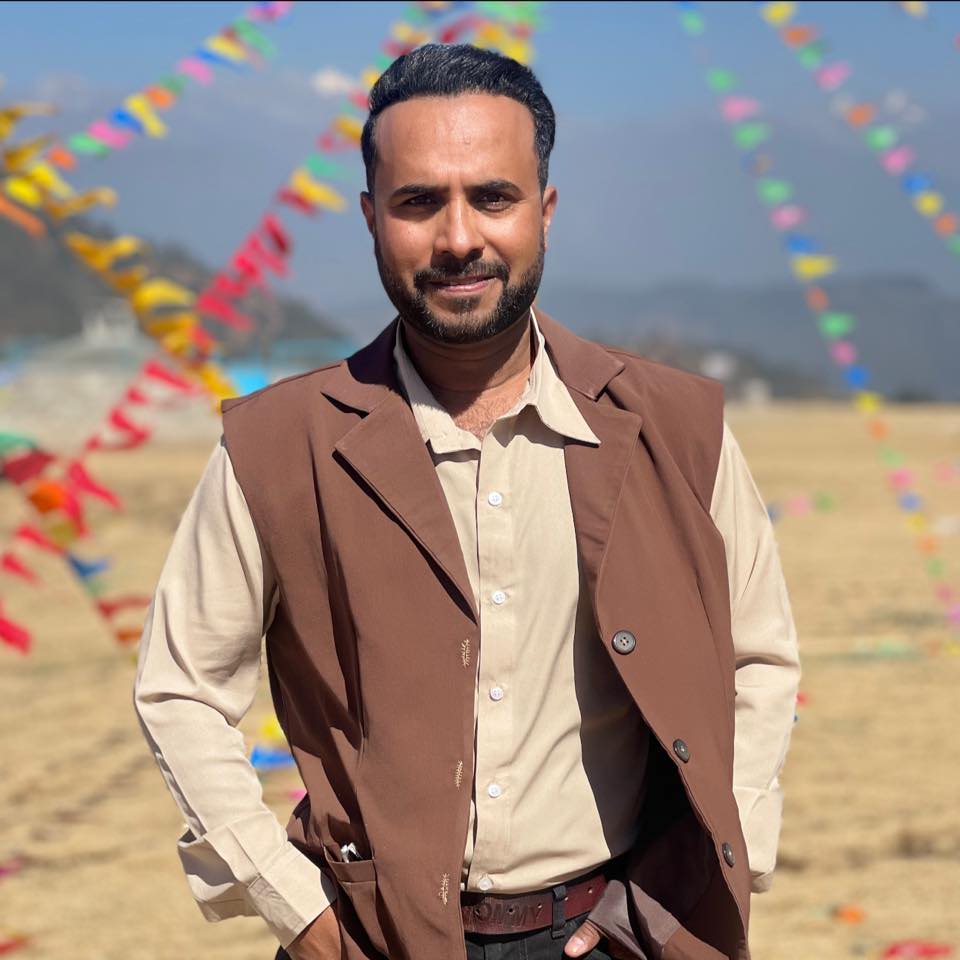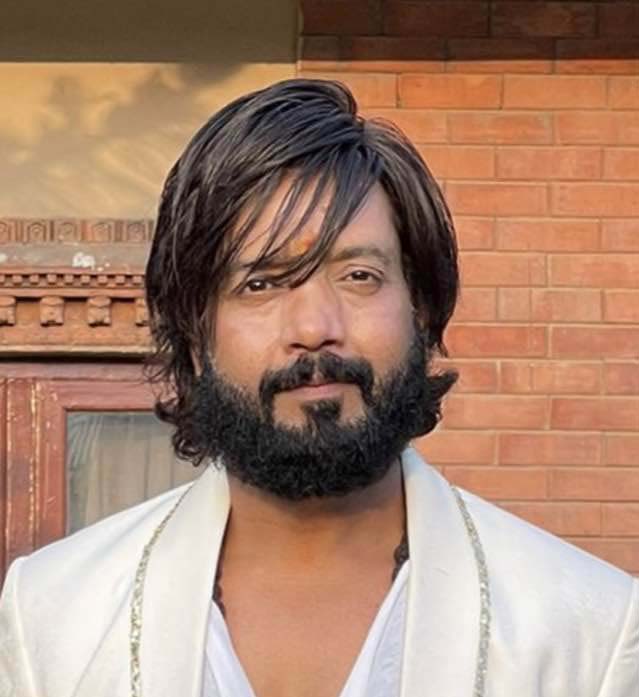Culture & Lifestyle
For actors, some roles are harder to forget than others
Stepping into a character can be intense, but stepping out of it might be even harder. How do actors return to themselves once the project ends?
Anish Ghimire
What happens to the character when the actor stops playing it?
Does that character disappear entirely, or does it still linger inside the performer long after the shooting is done or the curtain is drawn? The actor tries to move on from a certain role, but can they truly return to themselves?
Last year’s blockbuster hit ‘Purna Bahadur Ko Sarangi’ didn’t just further solidify Bijay Baral’s reputation as a dramatic actor—it also left him with an emotional weight that was hard to let go of. Playing Purna Bahadur took a lot of preparation—Baral spent time analysing the character and his background.
By the end of the shoot, he became so emotionally tied to Purna Bahadur that he believes the character still hasn’t left him. “Some roles you forget quickly, some take time, and some you don’t at all,” he says. “Even though it’s been a while, and I have worked on many other projects, Purna Bahadur hasn’t left me.”

For Baral, this isn’t a first-time occurrence. Nine years ago, when he played a schizophrenic character in Mandala Theatre’s ‘Bill Gates Pandit’, he found himself anxious and jittery in real life. He grew more irritated and wasn’t at peace with himself. When the play ended, it took him some time to let go of that character and return to normal. “A character’s impression is even more intense in theatre, and can be tougher to forget,” says the actor who recently won the Best Actor award at this year’s National Film Awards.
“This character hasn’t left you. You are still behaving like them,” is a common thing theatre actors say to each other, says director and actor Akanchha Karki. For many performers, a role doesn’t end with the final scene. It lingers—in their voice, body language, and even how they carry themselves offstage.
When a play ends and the set is destroyed, Karki finds it hard to return to herself. She feels “naked” and empty. “I feel lost for days, and at times it feels like my children have flown away and won’t return,” she says. For her, letting go of the character and production is painful.
Actor Keki Adhikari, on the other hand, used to approach roles with a different mindset. She followed the well-known “on/off” switch technique, which allowed her to stay focused during takes and cool off once the director called “cut”.
“When I hear ‘action’, I switch on and when the director says ‘cut’, I go back to Keki,” she says. But that was until ‘Boksi Ko Ghar’. She embraced method acting for her role and lived in her character for a long time—six months of preparation before the shooting began.
“I learned to climb trees, and the jungle was my home for a while,” she says. This deep immersion led to something Adhikari hadn’t anticipated. After the shoot wrapped, news reports about witchcraft allegations began to deeply affect her—triggering emotions she couldn’t shake off. The experience unsettled her so much that she enrolled in a ten-day course at the Vipassana Meditation Centre to find peace.

“Even now, the news of women getting beaten up for such accusations stings deep,” she says. “This character stayed with me for a while, and it was hard to let it go.”
When actor Pramod Agrahari finished his shooting for Manoj Pandit’s ‘Ek’, the practice leading up to the role was so intense that Pandit was worried for Agrahari’s health. “My director kept calling me asking if I was doing okay because the role I took on was so intense,” he says. Typically, Agrahari isn’t affected by his roles for long. He follows the “on/off” technique and prefers to leave the character on set. But ‘Ek’ was different—it stayed with him longer than any role before.
“After the shooting, I leave that energy right there; I don’t carry it with me as a sign of respect to the character. You must let go of a role, either slowly or quickly, to move on to the next chapter,” says the actor known for his intense roles like Tripathi in movies like ‘Agastya’.
However, not everyone can easily forget their roles and move on. Even globally acclaimed actors have spoken about the emotional aftermath of a project. One instance of an actor struggling to channel all the leftover creative energy is the Academy Award winner Cillian Murphy.
In an interview for 60 minutes, the Irish actor opens up about post-shooting blues. He says, “There is a huge amount of displaced energy. You spend so much time and energy on something, and then all of a sudden it’s completely done, and you’re not really a character, and you are not really a civilian. And you are in a sort of liminal space…You just don’t know what to do with all that energy and focus.”
Not just Murphy, the late Heath Ledger famously struggled with the dark psychological depths of his role as the Joker in ‘The Dark Knight’. He found it hard to shake off his character’s intensity even after filming ended. And the list goes on: Joaquin Phoenix for ‘Joker’, Irrfan Khan for ‘Namesake’, Nawazuddin Siddiqui for ‘Costao’ and many more—each actor carrying remnants of their roles long after the camera stopped.

A study done among Australian actors on the psychological effects of acting found that some acting practices can leave actors with unresolved emotions, leading to anxiety, depressive symptoms, and/or stress, following a performance. Reported psychosocial issues include identity confusion and the emotional cost of performing.
While audiences see only the final performance, the emotional weight actors carry long after the curtain falls often goes unnoticed and unspoken.
So, now the real question is, how do these actors deal with the post-collaboration blues and character hangover?
To return to himself and leave the persona behind, Bijay Baral attempts to escape from his mind and house. “I meet my friends, discuss with them what I am going through, and take a trip,” he says. This is essential for two reasons: one to return to normality and the other to move on to the next role.
But Baral doesn’t sweat it; he is incredibly grateful to his characters and is happy to repeat this acting process. “Playing many roles over the years has taught me more than books could ever have. Even right now, while doing this interview, I am able to speak freely because of my characters,” he says.
For director Akanchha Karki, seeing the sets getting broken down breaks her heart, but she knows this is the “norm” and moves on gradually. Although it takes days, she returns to herself through a new project or role.

It is crucial for actors to channel their creative energy and emotion after a project is done. There needs to be an outlet where they can safely deposit them. Some actively do something, some sit back and embrace slow living.
Keki Adhikari believes in moving her body—she exercises to the point that she sweats heavily. “By doing so, I am healthily spending my energy and making room for something new,” she says.
But Cillian Murphy embraces slow living. In the same interview for 60 minutes, he discusses travelling and spending time with his family after finishing a project. By trying to do just one project a year, he is building a healthy boundary between his reel and real self. “The work of research for an actor is being a human being and not just going from sets to hotels, from festivals to award ceremonies. You should just be living, that’s your research,” says the actor popular for his roles in ‘Peaky Blinders’ and ‘Oppenheimer’.
In the end, playing a character is not limited to performance, its an act of transformation. Some roles linger, others fade, but all leave behind some traces. For actors, returning to themselves isn’t always a straight path, it’s a slow shedding of borrowed skin.




 11.12°C Kathmandu
11.12°C Kathmandu
%20(1).jpg&w=200&height=120)












%20(1).jpg&w=300&height=200)

